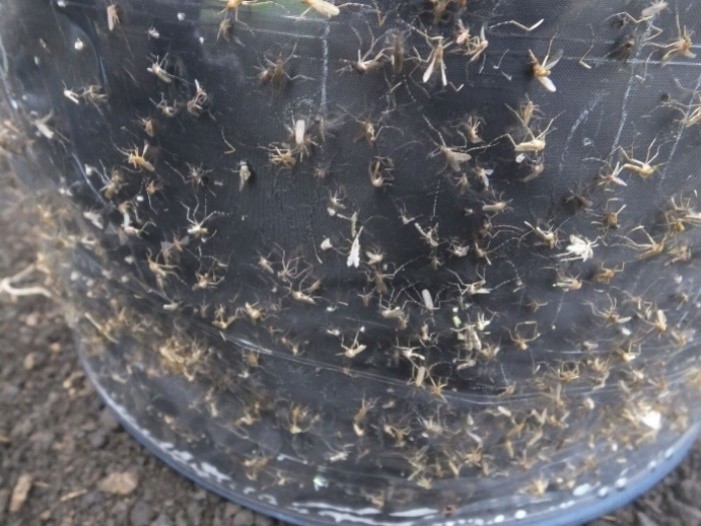Mosquito traps that mimic humans, cattle have ‘great potential’ for malaria control
Click Here to Manage Email Alerts
Novel mosquito traps that mimic humans and cattle through a combination of odor, heat and visual stimuli were effective at collecting outdoor-biting mosquitoes, such as Anopheles arabiensis, an important malaria vector in Africa, according to study findings published in Parasites & Vectors.
“The study provides a better system to sample and characterize outdoor mosquito populations, estimating mosquito numbers, determining mosquito species composition and host of preference,” Bernard Abong’o, MSc, a PhD student at Liverpool School of Tropical Medicine who is based at the Kenya Medical Research Institute, told Infectious Disease News. “Also, given the high numbers of mosquitoes attracted and trapped using host decoy trap, the trap has a great potential to be developed into a mosquito control tool.”
According to Abong’o and colleagues, in sub-Saharan Africa, malaria vector surveillance mostly targets mosquitoes that feed and live indoors. For their study of outdoor-biting mosquitoes, they tested the novel host decoy trap (HDT) against what they called the “gold standard” mosquito collection method, human landing catch (HLC), which relies on attracting mosquitos to human volunteers.
In contrast, HDTs attract mosquitoes using odor — which is vented toward the trap from a human or cow placed in a tent — visual stimulus in the form of a black fabric jacket tied around a bucket, and heat from a container filled with hot water that is placed inside the bucket.


Abong’o and colleagues compared the performance of HDTs baited with either human (HDT-H) or cattle (HDT-C) odors with HLC in western Kenya in May and June 2017 and observed significant differences in the results. HDT-Cs collected a nightly mean of 43.2 (95% CI, 26.7-69.8) Anopheles mosquitoes and HDT-Hs collected a nightly mean of 0.97 (95% CI, 0.4-2.1) of the insects — significantly fewer than HLC, which collected a nightly mean of 5.8 (95% CI, 4.1-8.2).
Per trapping night, HDT-Cs and HDT-Hs collected significantly higher proportions of A. arabiensis — a mostly outdoor-feeding mosquito — than HLCs, Abong’o and colleagues reported. They found that HLCs caught the highest proportion of A. gambiae — which mostly feed indoors on humans — whereas HDT-Cs caught the least number of that particular species.
“The Host Decoy Trap is highly effective for collecting outdoor biting mosquitoes with a potential for control of outdoor mosquito populations,” Abong’o said. “Additional research required includes developing an internal heating system maintained at body temperature to replace hot water used as a thermal stimuli and developing an odor blend that incorporates all components of natural host odors to be incorporated into the trap.” – by Marley Ghizzone
Disclosures: The authors report no relevant financial disclosures.
